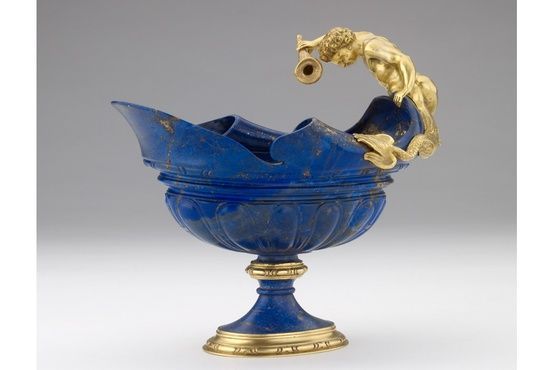Ashmolean receives major collection of Renaissance gold and silver: The Michael Wellby Bequest
Portugese Ewer.©Ashmolean Museum, University of Oxford.
OXFORD.- The Ashmolean announces that it has received a major collection of gold and silver objects of the Renaissance and Baroque periods from the collector, the late Michael Wellby (1928–2012). The bequest includes nearly 500 objects of the greatest rarity.
Professor Tim Wilson, Keeper of the Department of Western Art, who knew Michael Wellby well, says, “The Ashmolean is extremely grateful to Michael and his family. This is the most important accession of objects of this sort to any UK museum since the bequest of objects from Waddesdon Manor by Ferdinand Rothschild to the British Museum in 1898.”
Michael Wellby was a member of a family prominent in the silver trade. At the age of eighteen, he took a part-time job in his father’s business where he acquired a lasting passion for the beauty and craftsmanship of early silver. He opened his own shop in Grafton Street in the 1960s, specialising in German silver of the sixteenth and seventeenth centuries, in which he became an acknowledged expert. Both at auctions in London and on trips to the continent with his wife, Joy, he made many discoveries and acquired many rarities. Several of these were sold through the shop but a few exceptional pieces were added to the personal collection which has now been bequeathed to the Ashmolean.
Spectacular pieces by or attributed to German and Flemish makers, often bearing the arms of their original owners, form the nucleus of the collection, alongside a number of equally rare pieces made elsewhere in Europe. Although most of the pieces are made of silver or include gold or silver mounts, several incorporate ivory, agate, shell, lapis lazuli or rock crystal carved with the virtuosity that is typical of pieces of this kind which have long been highly valued by wealthy collectors and are now rarely seen outside museums.
Many of the Wellby pieces show their patrons’ fascination with exotic materials, especially from the East and Africa. There are beautifully carved and mounted examples of semi-precious stones, of exotic shells and mother-of pearl, of coconut shell, ostrich egg, and ivory. One of the most important pieces is a silver gilt ewer made in Portugal in c.1510-15. The ewer is in the fantastic style of Portuguese art and architecture known as the Manueline style and is enameled with the Royal Arms of Portugal. The single most extraordinary object is a lapis lazuli bowl with gold mounts made in Prague in c. 1608 by the brilliant Dutch goldsmith Paulus van Vianen.
The Wellby collection is of the type formed in the past by continental princes such as the Electors of Saxony in the seventeenth and eighteenth centuries and more recently by Sir Julius Wernher or by the Rothschild family. It will stand alongside the Ashmolean’s Fortnum Collection of Renaissance artifacts and the English silver, which, in many ways, it complements. A selection of the objects will go on temporary display in the West Meets East Gallery from February 2013, before the entire collection is displayed in a permanent gallery, designed to show the collection in its full brilliance.
Lapis Bowl.© Ashmolean Museum, University of Oxford.

/https%3A%2F%2Fprofilepics.canalblog.com%2Fprofilepics%2F1%2F0%2F100183.jpg)
/https%3A%2F%2Fstorage.canalblog.com%2F03%2F02%2F119589%2F96711876_o.jpg)
/https%3A%2F%2Fstorage.canalblog.com%2F11%2F31%2F119589%2F94773502_o.jpg)
/https%3A%2F%2Fstorage.canalblog.com%2F20%2F83%2F119589%2F94772815_o.jpg)
/https%3A%2F%2Fstorage.canalblog.com%2F26%2F72%2F119589%2F75604929_o.jpg)
/https%3A%2F%2Fstorage.canalblog.com%2F59%2F60%2F119589%2F26458628_o.jpg)




/http%3A%2F%2Fstorage.canalblog.com%2F97%2F49%2F119589%2F129856334_o.jpg)
/http%3A%2F%2Fstorage.canalblog.com%2F25%2F08%2F119589%2F129521423_o.jpg)
/http%3A%2F%2Fstorage.canalblog.com%2F43%2F43%2F119589%2F129237428_o.jpg)
/http%3A%2F%2Fstorage.canalblog.com%2F73%2F38%2F119589%2F128525398_o.jpg)